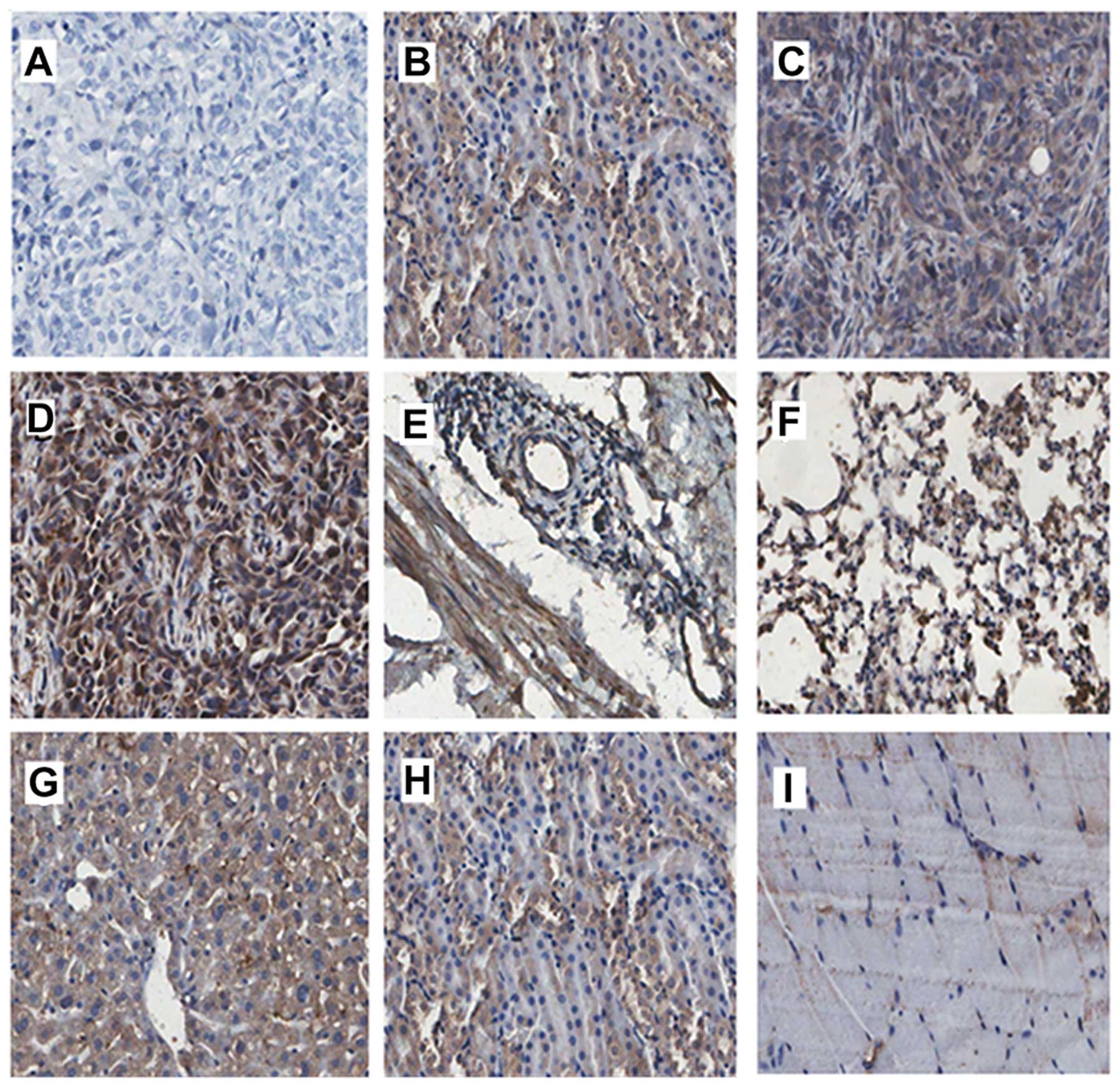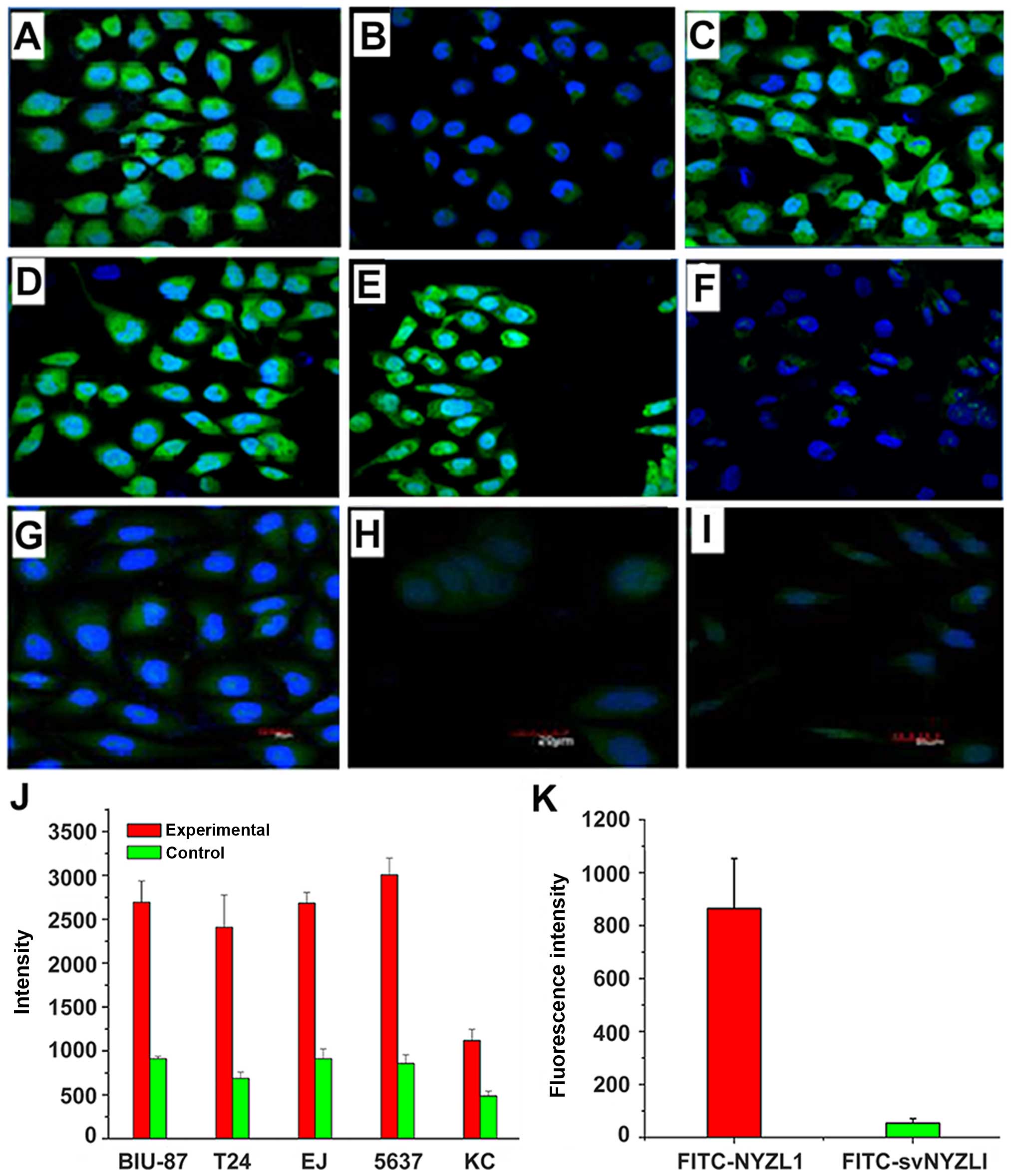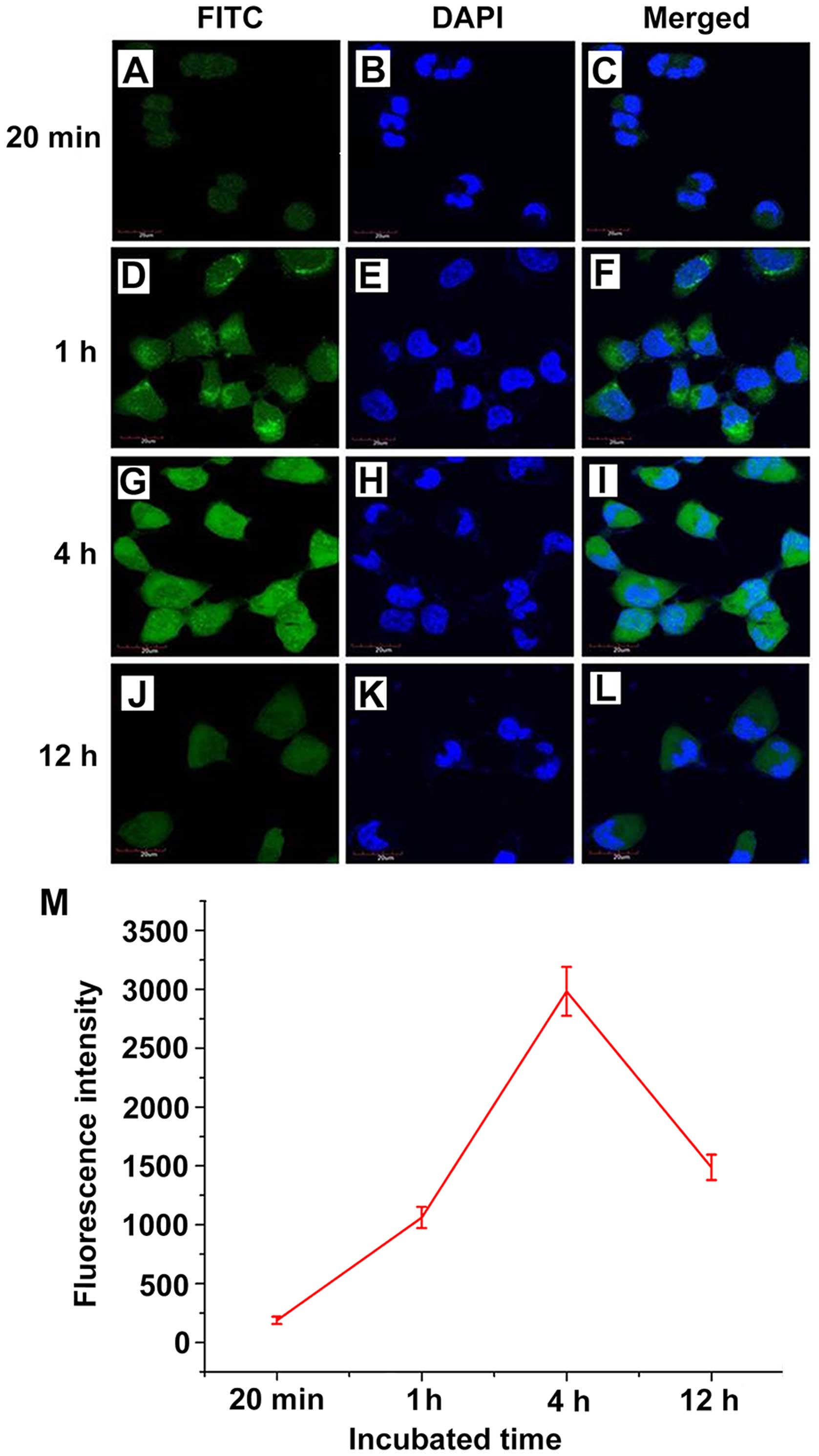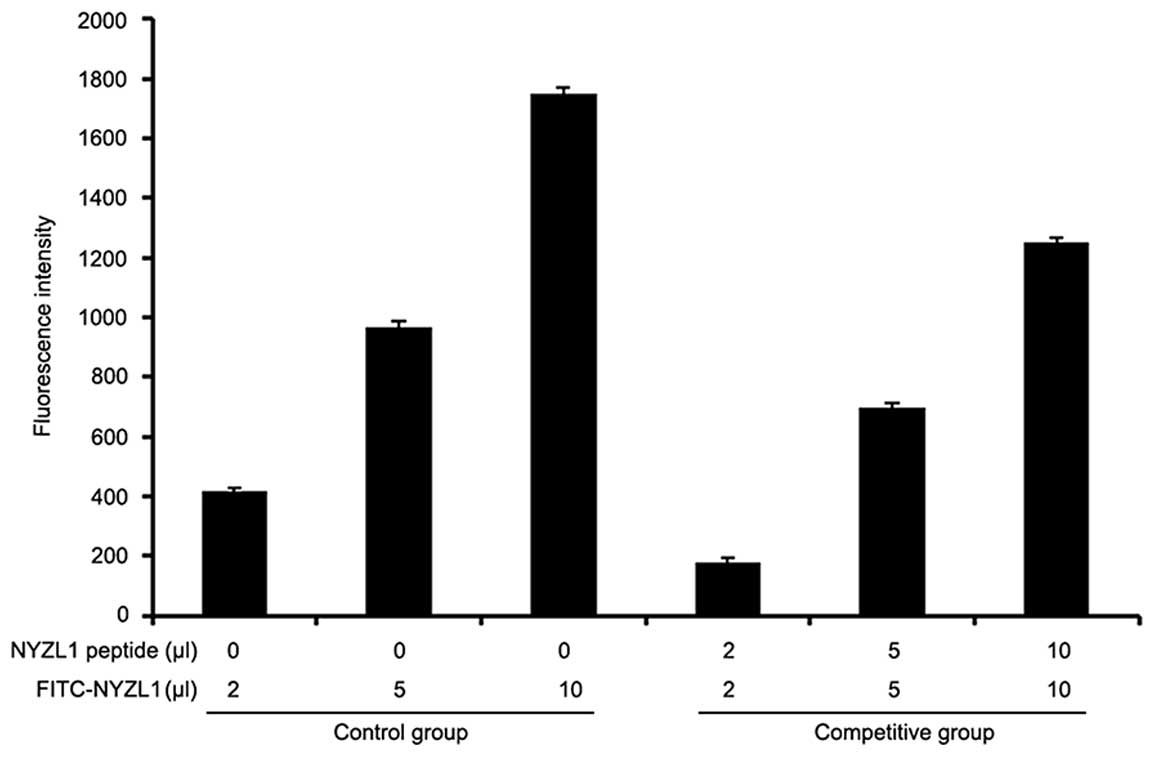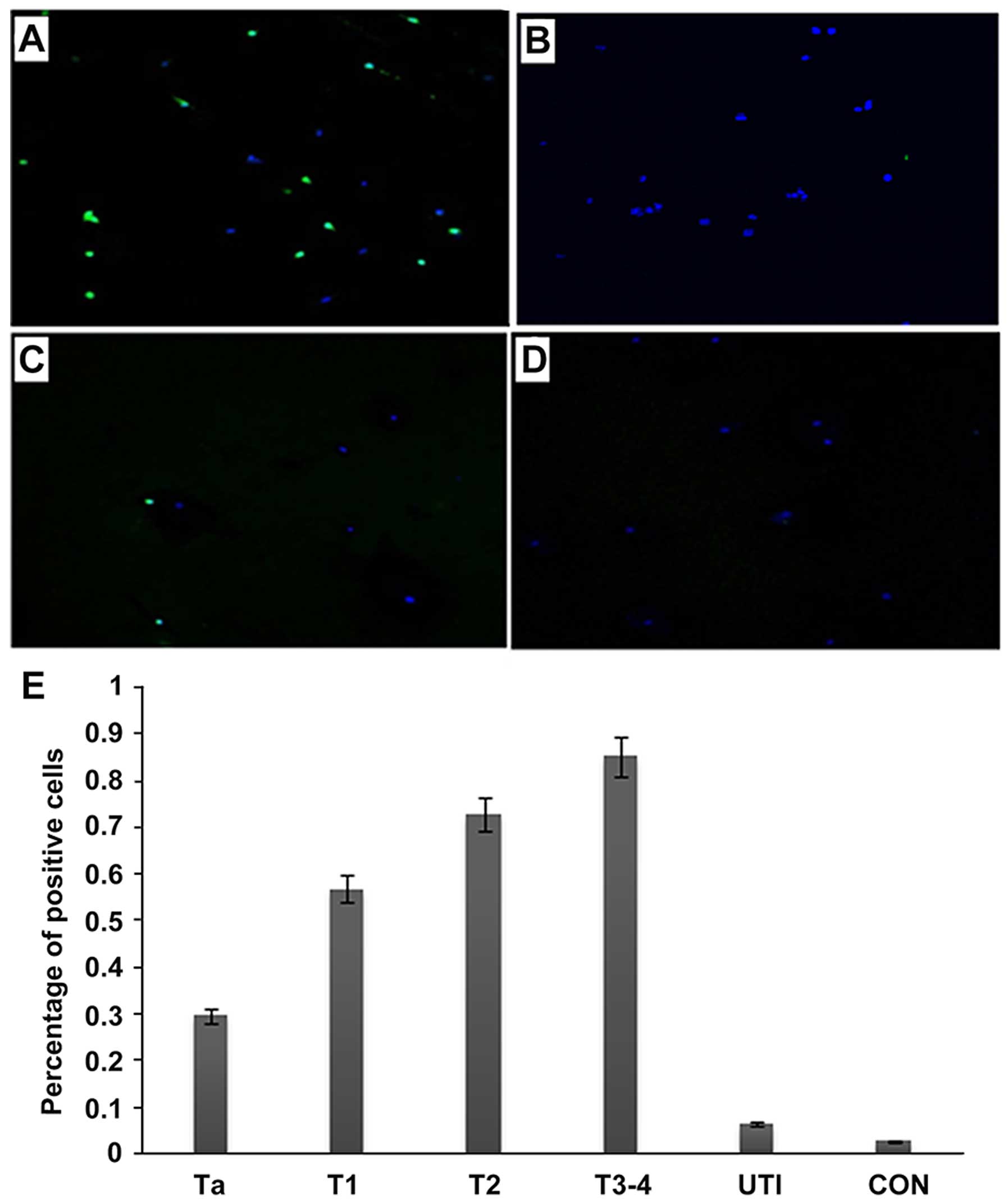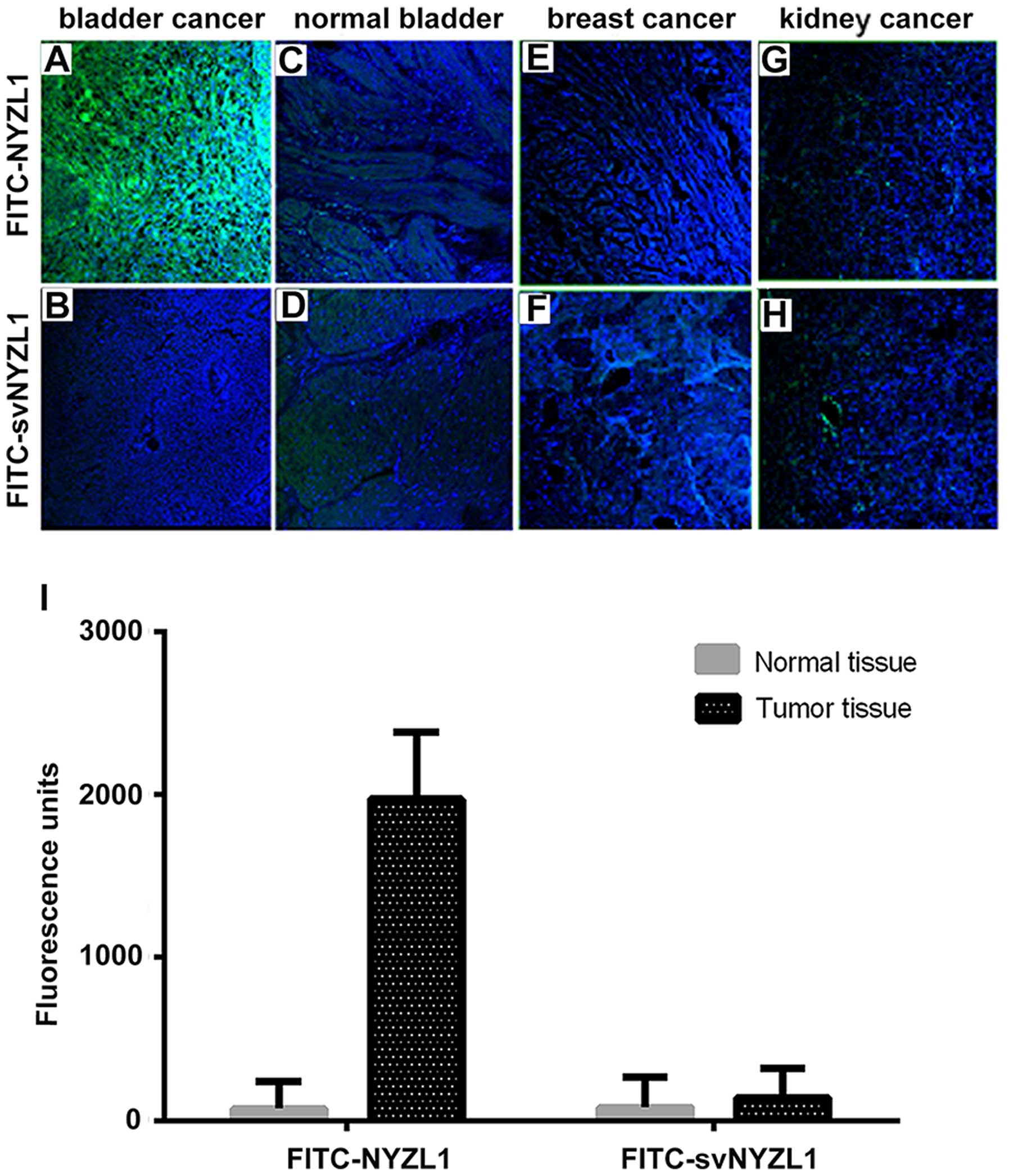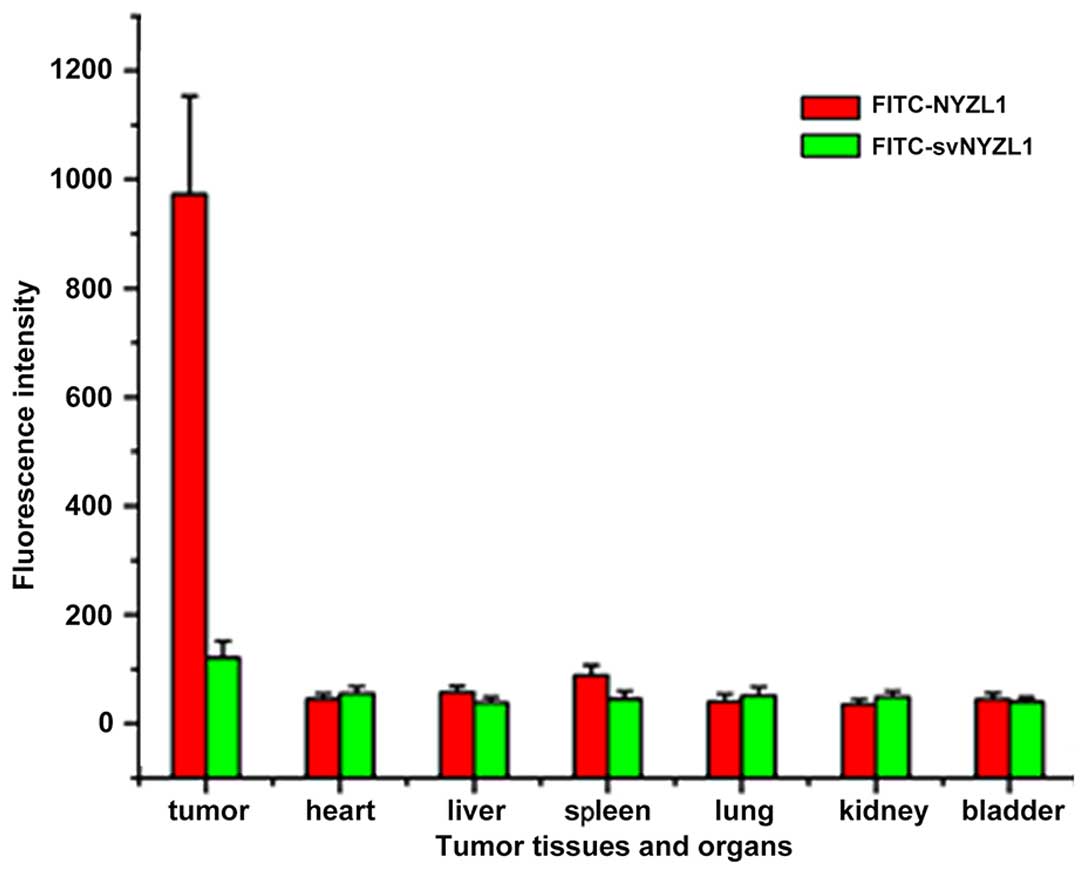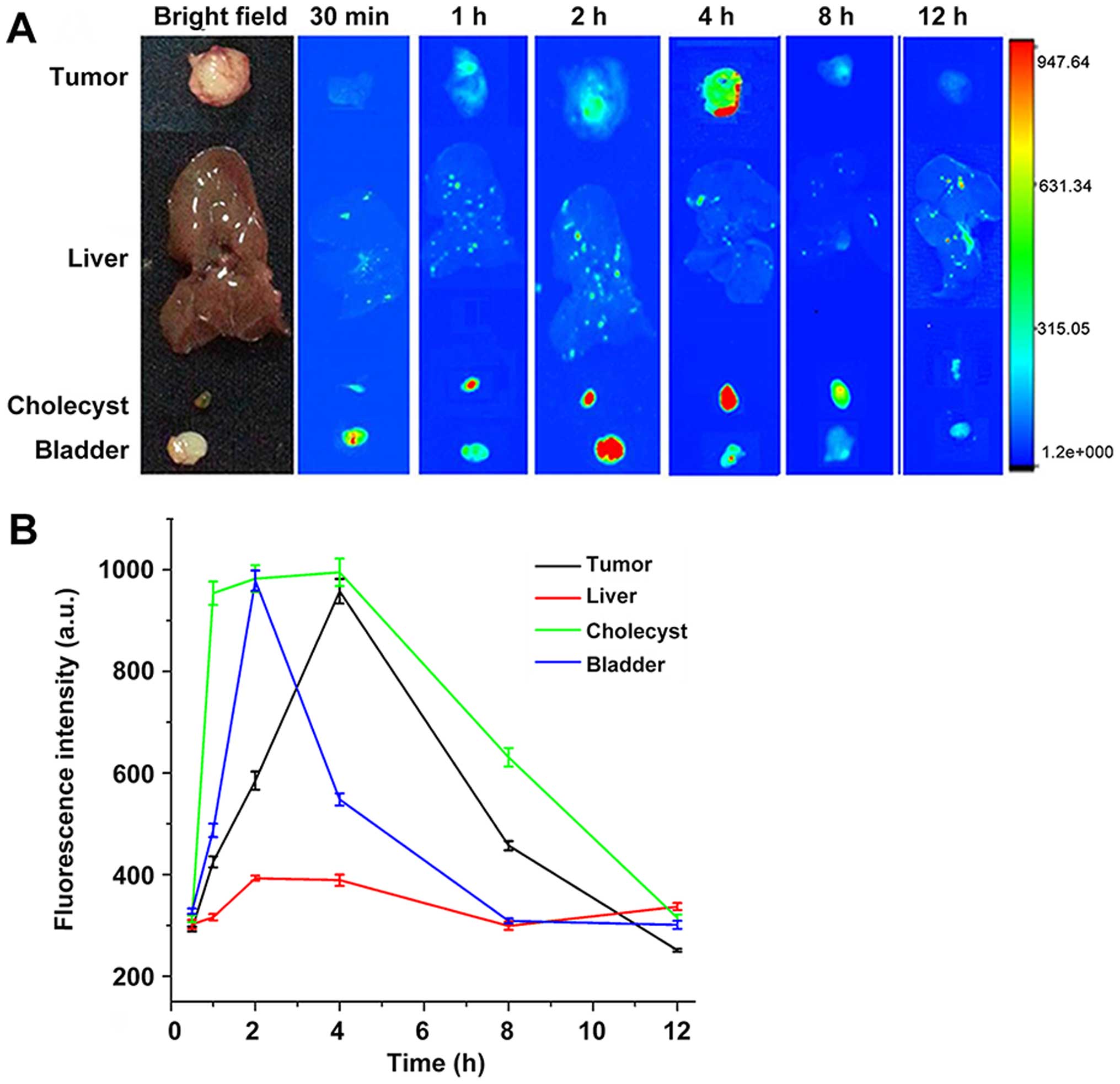|
1
|
Ploeg M, Aben KK and Kiemeney LA: The
present and future burden of urinary bladder cancer in the world.
World J Urol. 27:289–293. 2009. View Article : Google Scholar : PubMed/NCBI
|
|
2
|
Babjuk M, Oosterlinck W, Sylvester R,
Kaasinen E, Böhle A and Palou-Redorta J: European Association of
Urology (EAU): EAU guidelines on non-muscle-invasive urothelial
carcinoma of the bladder. Eur Urol. 54:303–314. 2008. View Article : Google Scholar : PubMed/NCBI
|
|
3
|
Kirkali Z, Chan T, Manoharan M, Algaba F,
Busch C, Cheng L, Kiemeney L, Kriegmair M, Montironi R, Murphy WM,
et al: Bladder cancer: Epidemiology, staging and grading, and
diagnosis. Urology. 66(Suppl 1): S4–S34. 2005. View Article : Google Scholar
|
|
4
|
Sylvester RJ, van der Meijden AP,
Oosterlinck W, Witjes JA, Bouffioux C, Denis L, Newling DW and
Kurth K: Predicting recurrence and progression in individual
patients with stage Ta T1 bladder cancer using EORTC risk tables: a
combined analysis of 2596 patients from seven EORTC trials. Eur
Urol. 49:466–477. 2006. View Article : Google Scholar : PubMed/NCBI
|
|
5
|
Hall MC, Chang SS, Dalbagni G, Pruthi RS,
Seigne JD, Skinner EC, Wolf JS Jr and Schellhammer PF: Guideline
for the management of nonmuscle invasive bladder cancer (stages Ta,
T1, and Tis): 2007 update. J Urol. 178:2314–2330. 2007. View Article : Google Scholar : PubMed/NCBI
|
|
6
|
Botteman MF, Pashos CL, Redaelli A, Laskin
B and Hauser R: The health economics of bladder cancer: A
comprehensive review of the published literature.
Pharmacoeconomics. 21:1315–1330. 2003. View Article : Google Scholar
|
|
7
|
Riley GF, Potosky AL, Lubitz JD and
Kessler LG: Medicare payments from diagnosis to death for elderly
cancer patients by stage at diagnosis. Med Care. 33:828–841. 1995.
View Article : Google Scholar : PubMed/NCBI
|
|
8
|
Liu JJ, Droller MJ and Liao JC: New
optical imaging technologies for bladder cancer: Considerations and
perspectives. J Urol. 188:361–368. 2012. View Article : Google Scholar : PubMed/NCBI
|
|
9
|
Weissleder R: Molecular imaging in cancer.
Science. 312:1168–1171. 2006. View Article : Google Scholar : PubMed/NCBI
|
|
10
|
Kwon YS, Cho YS, Yoon TJ, Kim HS and Choi
MG: Recent advances in targeted endoscopic imaging: Early detection
of gastrointestinal neoplasms. World J Gastrointest Endosc.
4:57–64. 2012. View Article : Google Scholar : PubMed/NCBI
|
|
11
|
Mahmood U and Wallace MB: Molecular
imaging in gastrointestinal disease. Gastroenterology. 132:11–14.
2007. View Article : Google Scholar : PubMed/NCBI
|
|
12
|
Cheng L, Davison DD, Adams J,
Lopez-Beltran A, Wang L, Montironi R and Zhang S: Biomarkers in
bladder cancer: Translational and clinical implications. Crit Rev
Oncol Hematol. 89:73–111. 2014. View Article : Google Scholar
|
|
13
|
Muguruma N, Miyamoto H, Okahisa T and
Takayama T: Endoscopic molecular imaging: Status and future
perspective. Clin Endosc. 46:603–610. 2013. View Article : Google Scholar : PubMed/NCBI
|
|
14
|
Vlieghe P, Lisowski V, Martinez J and
Khrestchatisky M: Synthetic therapeutic peptides: Science and
market. Drug Discov Today. 15:40–56. 2010. View Article : Google Scholar
|
|
15
|
Lee SM, Lee EJ, Hong HY, Kwon MK, Kwon TH,
Choi JY, Park RW, Kwon TG, Yoo ES, Yoon GS, et al: Targeting
bladder tumor cells in vivo and in the urine with a peptide
identified by phage display. Mol Cancer Res. 5:11–19. 2007.
View Article : Google Scholar : PubMed/NCBI
|
|
16
|
Zhang H, Aina OH, Lam KS, de Vere White R,
Evans C, Henderson P, Lara PN, Wang X, Bassuk JA and Pan CX:
Identification of a bladder cancer-specific ligand using a
combinatorial chemistry approach. Urol Oncol. 30:635–645. 2012.
View Article : Google Scholar
|
|
17
|
Gautam A, Kapoor P, Chaudhary K, Kumar R
and Raghava GP and Raghava GP: Open Source Drug Discovery
Consortium: Tumor homing peptides as molecular probes for cancer
therapeutics, diagnostics and theranostics. Curr Med Chem.
21:2367–2391. 2014. View Article : Google Scholar
|
|
18
|
Babjuk M, Burger M, Zigeuner R, Shariat
SF, van Rhijn BW, Compérat E, Sylvester RJ, Kaasinen E, Böhle A,
Palou Redorta J, et al: European Association of Urology: EAU
guidelines on non-muscle-invasive urothelial carcinoma of the
bladder: Update 2013. Eur Urol. 64:639–653. 2013. View Article : Google Scholar : PubMed/NCBI
|
|
19
|
Geavlete B, Jecu M, Multescu R, Georgescu
D and Geavlete P: HAL blue-light cystoscopy in high-risk
nonmuscle-invasive bladder cancer - re-TURBT recurrence rates in a
prospective, randomized study. Urology. 76:664–669. 2010.
View Article : Google Scholar : PubMed/NCBI
|
|
20
|
Smith GP: Filamentous fusion phage: Novel
expression vectors that display cloned antigens on the virion
surface. Science. 228:1315–1317. 1985. View Article : Google Scholar : PubMed/NCBI
|
|
21
|
Li M, Gu FL, Li WB, Song YS, Zhou AR and
Guo YL: Introduction of wild-type p53 gene downregulates the
expression of H-ras gene and suppresses the growth of bladder
cancer cells. Urol Res. 23:311–314. 1995. View Article : Google Scholar : PubMed/NCBI
|
|
22
|
Zhou HL, Zheng YJ, Cheng XZ, Lv YS, Gao R,
Mao HP and Chen Q: Intercellular transfer of P-glycoprotein from
the drug resistant human bladder cancer cell line BIU-87 does not
require cell-to-cell contact. J Urol. 190:1069–1075. 2013.
View Article : Google Scholar : PubMed/NCBI
|
|
23
|
Chen J, Ou-Yang X, Gao J, Zhu J, He X and
Rong J: Knockdown of ribonuclease inhibitor expression with siRNA
in non-invasive bladder cancer cell line BIU-87 promotes growth and
metastasis potentials. Mol Cell Biochem. 349:83–95. 2011.
View Article : Google Scholar
|
|
24
|
Fridman R, Benton G, Aranoutova I,
Kleinman HK and Bonfil RD: Increased initiation and growth of tumor
cell lines, cancer stem cells and biopsy material in mice using
basement membrane matrix protein (Cultrex or Matrigel)
co-injection. Nat Protoc. 7:1138–1144. 2012. View Article : Google Scholar : PubMed/NCBI
|
|
25
|
Lewis MT, Landua JD, Adams HC III and
Medina D: A mystery wrapped in an enigma: Matrigel enhancement of
mammary cell growth and morphogenesis. J Mammary Gland Biol
Neoplasia. 17:99–101. 2012. View Article : Google Scholar : PubMed/NCBI
|
|
26
|
Green MR and Sambrook J: Molecular
Cloning: A Laboratory Manual. Cold Spring Harbor Laboratory Press;
New York: 2012
|
|
27
|
Koivistoinen A, Ilonen II, Punakivi K,
Räsänen JV, Helin H, Sihvo EI, Bergman M and Salo JA: A novel
peptide (Thx) homing to non-small cell lung cancer identified by ex
vivo phage display. Clin Transl Oncol. 15:492–498. 2013. View Article : Google Scholar
|
|
28
|
Zhang L, Giraudo E, Hoffman JA, Hanahan D
and Ruoslahti E: Lymphatic zip codes in premalignant lesions and
tumors. Cancer Res. 66:5696–5706. 2006. View Article : Google Scholar : PubMed/NCBI
|
|
29
|
Pilch J, Brown DM, Komatsu M, Järvinen TA,
Yang M, Peters D, Hoffman RM and Ruoslahti E: Peptides selected for
binding to clotted plasma accumulate in tumor stroma and wounds.
Proc Natl Acad Sci USA. 103:2800–2804. 2006. View Article : Google Scholar : PubMed/NCBI
|
|
30
|
Horton DA, Bourne GT and Smythe ML:
Exploring privileged structures: The combinatorial synthesis of
cyclic peptides. J Comput Aided Mol Des. 16:415–430. 2002.
View Article : Google Scholar : PubMed/NCBI
|
|
31
|
Pasqualini R and Ruoslahti E: Organ
targeting in vivo using phage display peptide libraries. Nature.
380:364–366. 1996. View Article : Google Scholar : PubMed/NCBI
|
|
32
|
Essler M and Ruoslahti E: Molecular
specialization of breast vasculature: A breast-homing
phage-displayed peptide binds to aminopeptidase P in breast
vasculature. Proc Natl Acad Sci USA. 99:2252–2257. 2002. View Article : Google Scholar : PubMed/NCBI
|
|
33
|
Kolonin MG, Saha PK, Chan L, Pasqualini R
and Arap W: Reversal of obesity by targeted ablation of adipose
tissue. Nat Med. 10:625–632. 2004. View
Article : Google Scholar : PubMed/NCBI
|
|
34
|
Arap W, Pasqualini R and Ruoslahti E:
Cancer treatment by targeted drug delivery to tumor vasculature in
a mouse model. Science. 279:377–380. 1998. View Article : Google Scholar : PubMed/NCBI
|
|
35
|
Craik DJ, Fairlie DP, Liras S and Price D:
The future of peptide-based drugs. Chem Biol Drug Des. 81:136–147.
2013. View Article : Google Scholar
|















